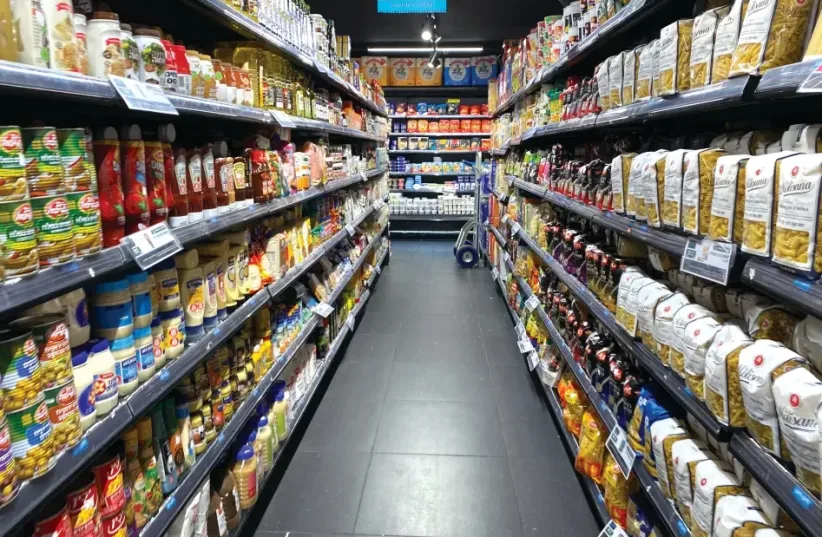In the digital age, the decision-making process of consumers in choosing the method of purchase has become complex and sophisticated. The development of retail technologies and the increase in online purchasing options present consumers with a dilemma: Should they spend time in front of the screen to manage an online order or go for the traditional purchase in the physical store?
The main question that arises is why more than 80% of all customers still prefer to get up from the sofa and go to the supermarket for a traditional purchase. For many years, we at the Retail Research Institute have been studying the factors that influence consumer decisions, the advantages and disadvantages of each purchase method, and examining what motivates consumers to prefer the physical experience over the online one.
Traditional or online purchase?
The purchase in the physical store requires consumers to face a variety of logistical challenges. First, you have to get through the difficult traffic jams, find parking and take care of the currency for the shopping cart. After that, the consumer enters the commercial arena, where he has to navigate between the shelves, locate the products on the shopping list, and check the prices. Consumers often find themselves exposed to stimuli and temptations on the sales floor, such as launch products, quantity promotions, and products presented in a tempting way. The experience in the store also includes interactions with other people, noises and standing in line at the butcher and at the checkouts. Dealing with shortages in inventory, advanced technologies that are supposed to make shopping easier but sometimes complicate the process, and malfunctions in the automatic teller machines are an integral part of the traditional experience. However, for many, this experience is an integral part of the buying process itself. The online purchase offers great convenience.
You can place the order from the comfort of your home, next to a cup of coffee, and save all the effort involved in getting to the store. However, there are drawbacks that consumers have to deal with, such as delivery times, stock shortages, and packaging quality. Customers don't want to wait two days for delivery and finally find out that critical products are missing, forcing them to go shopping anyway. The competition between the online marketing chains is not only on the price, but mainly on the quality of the delivery, the availability, the speed and the percentage of shortages. Customers expect fast and quality delivery, with well-packaged products and no shortages, and when these expectations are not met, they may prefer the traditional purchase. A financial comparison between the various chains in an online purchase includes not only the basket price, but also the shipping price, shipping times, variety and quality of shipping. This analysis will allow readers to get a broad and comprehensive picture of the expenses involved in each type of purchase, and will assist them in making informed decisions regarding their preferred method of purchase.
Why does the public still prefer the traditional purchase?
In an era where time is the most valuable resource, the critical question raised by the article is why the majority of the public still prefers to carry out their regular shopping in the traditional way and not enjoy it in front of the screen? One of the main factors is the feeling of control and security. When consumers are in the physical store, they can see and examine the products with their eyes, feel them with their hands, and verify their quality. The look and feel of the product is of great importance, especially in sensitive products such as fruits and vegetables, meats and dairy products. The consumer feels that he is getting the best product when he chooses it himself. During the physical purchase, consumers are exposed to a wide variety of stimuli and temptations on the sales floor. Promotions, new products, special launches, and volume sales - all these create an experience that challenges the consumer and provides a sense of satisfaction when finding a good deal. While in online shopping it is more difficult to feel this experience, in the physical store it is an integral part of the process.
Despite the great progress in delivery technologies, there are still concerns among consumers about the reliability of the system. Many customers have experienced disappointments when deliveries arrived late, when products were poorly packaged, or when products were out of stock. This uncertainty makes consumers prefer the physical purchase, where they can be sure that they are getting everything they need at that moment.
Sample results: Insignificant price differences, the problem is in the delivery
We put together a sample basket with 149 common products that most households consume during the month, from basic products to fresh products and cleaning and care products. We checked whether the price difference is significant between wandering through the grocery store shelves after traveling and looking for parking and ordering online from the computer during a break at work or from the mobile phone on the couch in the evening with the cup of coffee.
We discovered that the premium we pay is not high and significant and ranges between an additional 1.50%-2.50%. But here comes the catch - to this is added the shipping cost, when shipping prices are around NIS 30 for shipping. A benefit that previously existed in Shufersal for deliveries over NIS 750 has been canceled, and a delivery cost of NIS 30 represents 6% of a total of NIS 500 purchases. With the price difference and maybe a tip to the courier, the difference will already jump to 8%-10% which is a significant difference for the convenience of home delivery, alongside the disadvantages - lack of delivery, sometimes suboptimal fruits and vegetables, as well as renouncing the shopping experience.



